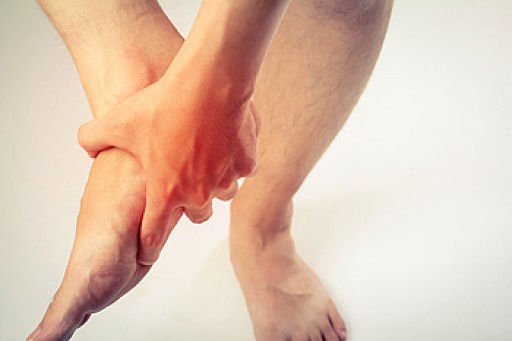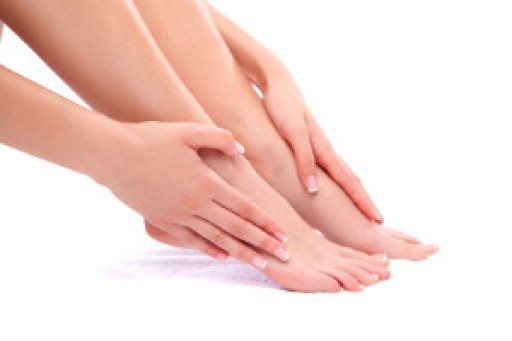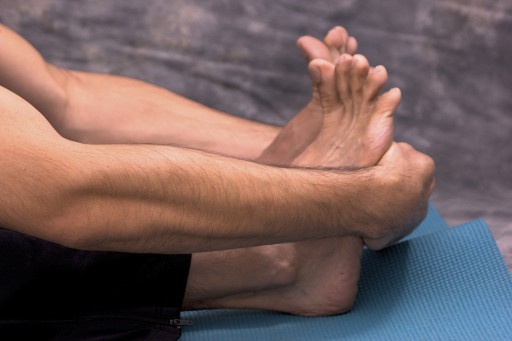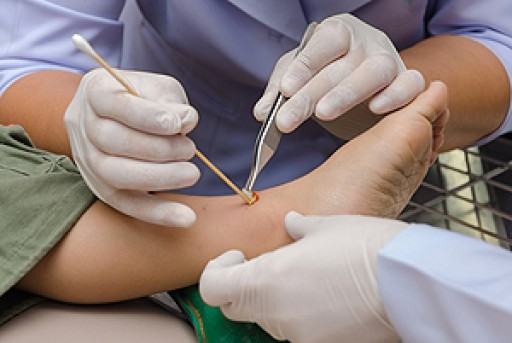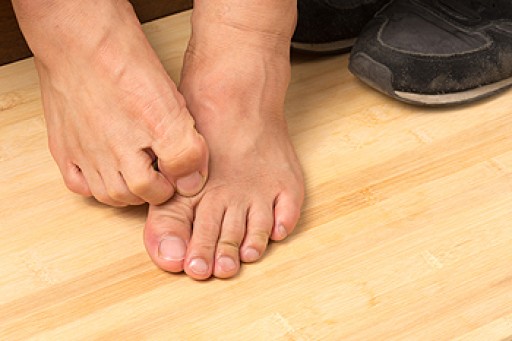 Cuboid syndrome is a condition in which the cuboid bone, located in the middle of the foot, becomes misaligned. This usually occurs as the result of an acute injury, such as an ankle sprain, or from repetitive impacts from activities like running or dancing. The cuboid bone moves out of its normal position when the ligaments between the cuboid and other bones in the foot are overstretched or torn. If you have this condition, you may feel pain, discomfort, or weakness along the outer edge of the foot. Placing weight on the affected foot may be painful and make standing and walking difficult. You may also notice mild swelling and bruising on the outside and bottom of the foot. If you are experiencing the symptoms of cuboid syndrome, please see a podiatrist for treatment.
Cuboid syndrome is a condition in which the cuboid bone, located in the middle of the foot, becomes misaligned. This usually occurs as the result of an acute injury, such as an ankle sprain, or from repetitive impacts from activities like running or dancing. The cuboid bone moves out of its normal position when the ligaments between the cuboid and other bones in the foot are overstretched or torn. If you have this condition, you may feel pain, discomfort, or weakness along the outer edge of the foot. Placing weight on the affected foot may be painful and make standing and walking difficult. You may also notice mild swelling and bruising on the outside and bottom of the foot. If you are experiencing the symptoms of cuboid syndrome, please see a podiatrist for treatment.
Cuboid syndrome, also known as cuboid subluxation, occurs when the joints and ligaments near the cuboid bone in the foot become torn. If you have cuboid syndrome, consult with one of our podiatrists from Canonsburg Podiatry Associates. Our doctors will assess your condition and provide you with quality foot and ankle treatment.
Cuboid syndrome is a common cause of lateral foot pain, which is pain on the outside of the foot. The condition may happen suddenly due to an ankle sprain, or it may develop slowly overtime from repetitive tension through the bone and surrounding structures.
Causes
The most common causes of cuboid syndrome include:
- Injury – The most common cause of this ailment is an ankle sprain.
- Repetitive Strain – Tension placed through the peroneus longus muscle from repetitive activities such as jumping and running may cause excessive traction on the bone causing it to sublux.
- Altered Foot Biomechanics – Most people suffering from cuboid subluxation have flat feet.
Symptoms
A common symptom of cuboid syndrome is pain along the outside of the foot which can be felt in the ankle and toes. This pain may create walking difficulties and may cause those with the condition to walk with a limp.
Diagnosis
Diagnosis of cuboid syndrome is often difficult, and it is often misdiagnosed. X-rays, MRIs and CT scans often fail to properly show the cuboid subluxation. Although there isn’t a specific test used to diagnose cuboid syndrome, your podiatrist will usually check if pain is felt while pressing firmly on the cuboid bone of your foot.
Treatment
Just as the range of causes varies widely, so do treatments. Some more common treatments are ice therapy, rest, exercise, taping, and orthotics.
If you have any questions, please feel free to contact our office located in Canonsburg and McMurray, PA . We offer the newest diagnostic and treatment technologies for all your foot care needs.
